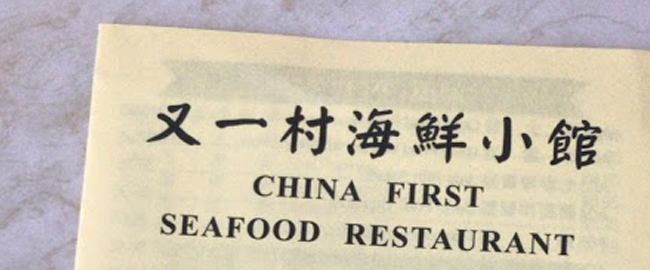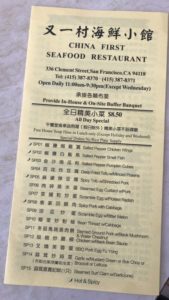“The Asian American Kaleidoscope,” by Alfred P. Flores
May 20, 2019
Alfred P. Flores, assistant professor of Asian American studies at Harvey Mudd College, writes about his Asian American History course, in which he encourages students to rethink how they understand history. –

Alfred Flores
Inspired by the teaching and pedagogy of historian Jean-Paul deGuzman, I have students conduct historical research to excavate their family’s or a specific community’s history using an artifact as a point of entry for their projects.
The class culminated with each student producing an essay and a digital exhibit that highlights a mosaic of experiences that include a variety of themes such as class, education, empire, ethnicity, gender, immigration, intergenerational/interethnic/interracial relations, militarization, racism, refugee status, sexuality and war. A digital archive (fall 2018) serves to capture and preserve the kaleidoscope of experiences that is Asian America.
Featured below is Linda Huang’s project, which describes her family’s restaurant.
China First: A Case Study on Menus and Chinese Food in America
by Linda Huang ’21
Creators – The Huang Family, especially my mother’s younger brother
Place – Inner Richmond in San Francisco, California, USA
Date Created or Date Issued – September 1998
Institution – The Huang Family
Language – Chinese and English
Content Description – The take-out menu is for those who want to order ahead of time and come pick up the food later. It has both English and Chinese as well as numbers if that is easier for the customers.
Type – Photograph of the take-out menu.
 The artifact is my uncle’s restaurant which was founded in 1998. For this project, I used their menu as a representation of the restaurant and larger themes about identity and culture. The restaurant is significant to my family because it is the place where we not only eat, but celebrate holidays, birthdays and returns home. China First is also significant because of the role it plays as a service to mainly working-class, first-generation Chinese immigrants in the neighborhood.
The artifact is my uncle’s restaurant which was founded in 1998. For this project, I used their menu as a representation of the restaurant and larger themes about identity and culture. The restaurant is significant to my family because it is the place where we not only eat, but celebrate holidays, birthdays and returns home. China First is also significant because of the role it plays as a service to mainly working-class, first-generation Chinese immigrants in the neighborhood.
Menus are typically thought of as just a form of communication between the establishment and customers. However, Chinese restaurant menus in America serve a larger purpose than just what kind of food they have; it is a reflection of Chinese identity and historical events. My family came to the United States after the Hart Cellar Act of 1965 and established a Chinese restaurant as a way to be employed. The restaurant is in the Inner Richmond neighborhood of San Francisco which is mainly Asian and white, and though it is not an ethnic enclave, there is a large enough Chinese-specific population where it is possible for my uncle’s restaurant to still be in business outside places like the San Francisco Chinatown.
Through looking at China First and the role of food, I realized that the presentation of food—as presentations of culture and identity—is extremely important and not always recognized. Restaurants and menus, in particular, play a huge role in reflecting and spearheading racial and political identity formation through straddling what it means to be “authentic”—or traditional—and how to assimilate. Looking at my uncle’s menu, it has both Chinese characters as well as English words which reflects the clientele as well as reflecting a time period where racism against Chinese people is not as violent or severe as it had been in the past. But looking at, for example, the 1920s to 1950s, most Chinese restaurant menus were all in English; those menus did not even have English letters attempting to translate the sounds of the Chinese words because of the strong anti-Chinese sentiments and a desperate attempt from the Chinese to assimilate. Chinese, and more broadly Asians as well as Asian Americans, have always been on a spectrum of authenticity—pride and cultural practices—and assimilation—adaptation into white America; I was not expecting to have found this trend through the analysis of menus and food service.
Key terms: Chinese, Chinese American, Immigration, Food, Assimilation, Authenticity, Class
Read more stories from Professor Flores’ Asian American History course: fall 2018 Digital Exhibition